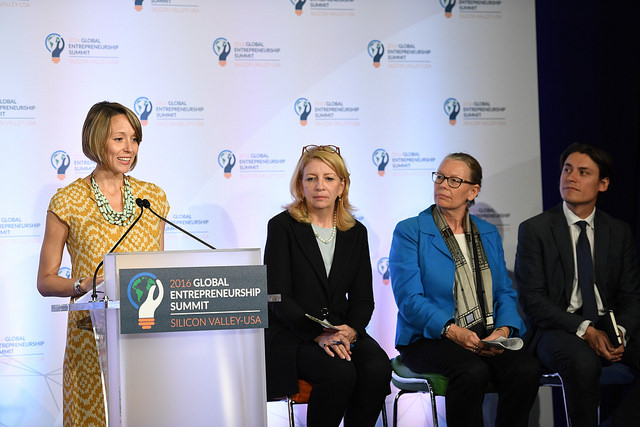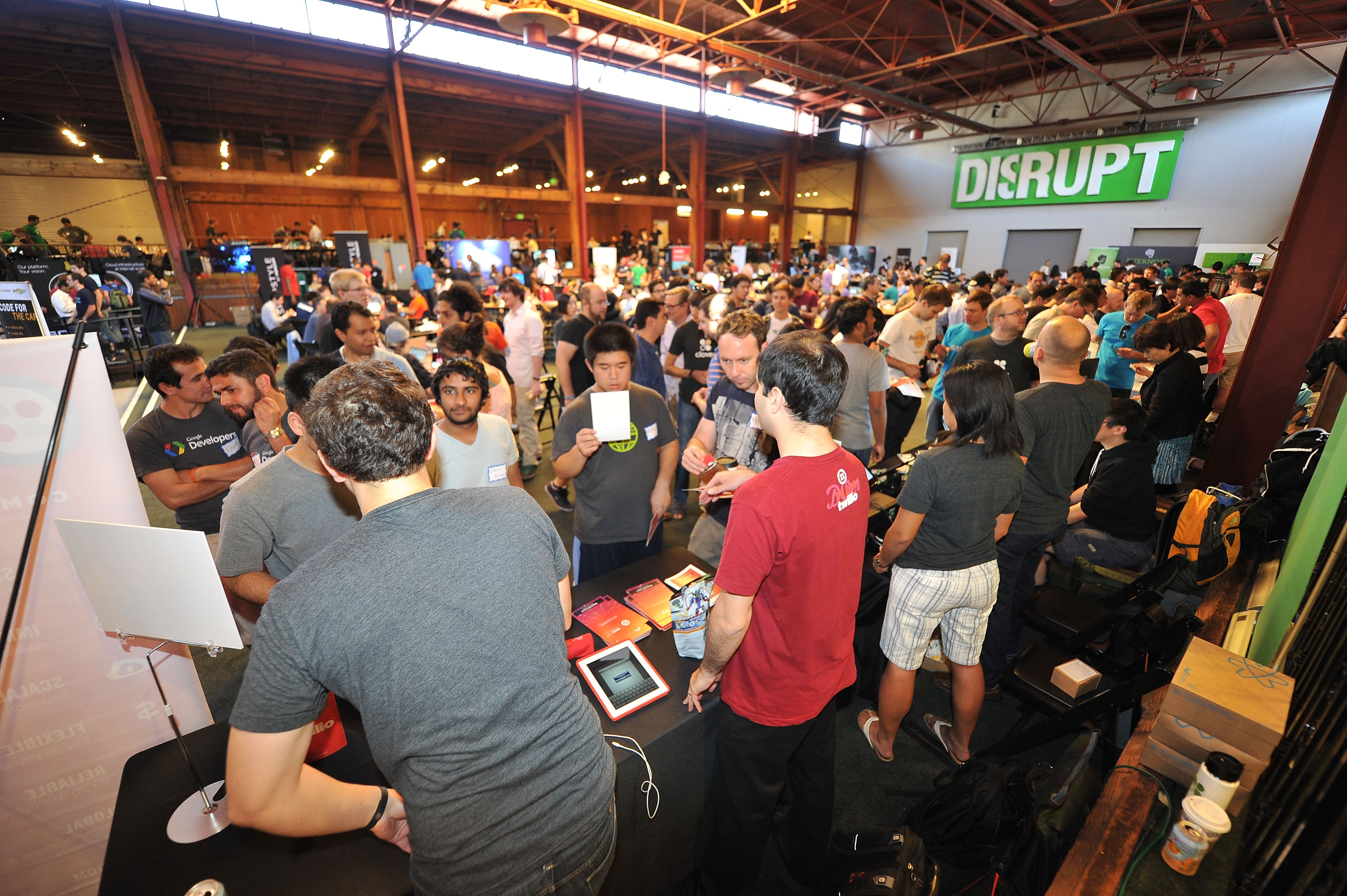Weekly Roundup is a McNair Center series compiling and summarizing the week’s most important Entrepreneurship and Innovation news.
Here is what you need to know about entrepreneurship this week:
A Tale of Untapped Potential: Cincinnati
Eliza Martin, Research Assistant, McNair Center for Entrepreneurship and Innovation
McNair’s Martin focuses on Cincinnati’s entrepreneurial ecosystem this week. While this midwestern city might appear a surprising or unlikely choice, many of Cincinnati’s entrepreneurs have thrived in recent years due to the city’s ample resources. For starters, the city is home to ten Fortune 500 companies, including Macy’s and Kroger. Its large corporations offer an invaluable network of resources and access to capital for aspiring entrepreneurs.
Furthermore, the University of Cincinnati, which boasts a marketing program that ranks among the top five in the nation, and Xavier University both offer university accelerator programs designed to support young entrepreneurs as they look to launch a business plan. In addition to university accelerator programs, entrepreneurs in Cincinnati also have the option of applying to three other accelerators within the region, The Brandery, UpTech and Ocean Accelerator.
Although Cincinnati is home to a variety of different VC funds and investment options, like CincyTech and Cintrifuse, the city closes significantly fewer deals on average per year than the likes of Austin or Denver. Martin explains this smaller number of deal closures as a function of lower levels of VC activity and fewer funding rounds. To compete with major entrepreneurial hubs, Cincinnati must increase its VC presence even further.
Wanted: More Women Entrepreneurs
Taylor Jacobe, Research Assistant, McNair Center for Entrepreneurship and Innovation
In her latest post for the McNair Center, Jacobe analyzes how improving female representation in entrepreneurship could boost economic growth in the U.S. Currently, women-owned businesses account for only 16 percent of employing companies. While women entrepreneurs tend to perform as well as, if not better than, their male counterparts, many cite lack of access to capital and limited mentorship opportunities as major obstacles to success.
According to a study from the National Women’s Business Council, women entrepreneurs start their businesses with 50 percent less capital than men. A survey conducted by the Kauffman Foundation revealed that 79 percent of women entrepreneurs drew from their personal funds when launching their business. Perhaps more telling, women are three times less likely than men to receive funding from angel and seed investors for their startups. By tackling gender bias in VC firms and other barriers to capital, public and private initiatives can better integrate women into America’s entrepreneurial ecosystem.
As Snap Ascended, These Rival Apps Faltered
Joanna Glasner, Reporter, TechCrunch
According to TechCrunch’s Glasner, VCs love messaging apps for a number of reasons: “massive scalability, low startup costs, loyal users and the potential to mint billions without having to turn a profit.” Messaging apps present a huge potential for success for investors in the modern age, exemplified by Snap’s recent IPO and WhatsApp’s acquisition by Facebook for $17 billion in 2014. Despite this rosy picture, many VC-backed startups that were messaging apps have fallen through the cracks over the years. TechCrunch recently took a closer look at how much capital has been invested into messaging apps only to find that VCs have poured hundreds of millions of dollars into companies that haven’t raised a funding round in two years. Glasner concedes that it is too early to dismiss these once promising startups as failed investments. Regardless the outcomes of these startups, prospects of success in the messaging app arena are daunting.
Y Combinator Opens Registration for Its Free Startup School Online Course
Ken Yeung, Contributor, VentureBeat
Y Combinator,one of the most successful seed accelerators in the U.S., has funded over 1,464 startups since its founding in 2005. Known for its excellent track record of spotting tech giants (Dropbox, Reddit and Airbnb, to name a few), its companies have a total valuation of over $80 billion. The famous accelerator recently announced that it would be opening up its Startup School event to the masses through a massively open online course (MOOC). The 10-week online course will offer entrepreneurs, who are not enrolled in Y Combinator’s core program, access to online courses taught by successful entrepreneurs, venture capitalists and industry greats. Lessons will focus on important topics in the startup business, such as “idea generation, product development, growth, culture building, fundraising and more.” Y Combinator partner Jessica Livingston told VentureBeat back in 2015 that the accelerator’s mission was “to help startups at whatever stage they’re in become billion-dollar companies.”
Lemnos Just Raised a $50 Million Third Fund to (Mostly) Focus on Hardware
Connie Loizos and Katie Roof, Contributors, TechCrunch
San Francisco-based VC firm Lemnos was founded in 2014 as a firm focused on seed-staged investment into hardware companies. Successful companies like Fitbit, Oculus, Square and GoPro have boosted investor confidence in hardware companies in recent years. Lemnos recently announced that it will discontinue its incubator program to focus solely on investing in promising software development and hardware startups. The announcement marks a new stage in the VC firm’s short history, as Lemnos used to invest exclusively in hardware companies. When asked about possible investment opportunities moving forward, Lemnos executives told TechCrunch that they were very excited about the field of robotics.
This Program Uses Lean Startup Techniques to Turn Scientists into Entrepreneurs
Greg Satell, Contributor, Harvard Business Review
In 2011 the National Science Foundation (NSF), headed by Subra Suresh, founded I-Corps, a program designed to help transform scientists into entrepreneurs. The idea for the program originated when Suresh noticed that many of the scientific discoveries, made possible with NSF research grants, were not breaking out of their academic silos and into the marketplace. Harvard Business Review’s Satell describes the program as an initiative by NSF to “foster better links between government and industry.” Errol Arkilic, director of I-Corps, initially reached out to Steve Blank to help design the program, which is now an 8-week course for graduate students. The curriculum adopts the philosophies of Blank’s lean startup movement. Blank stresses the importance of developing products that actually address consumer needs; early on, Arkilic realized that many aspiring scientist-entrepreneurs create solutions to problems that consumers don’t want. Upon completion of the entrepreneurship training, participants partner with VentureWell, a nonprofit accelerator.
As of last May, I-Corps successfully trained over 700 teams. In aggregate, I-Corps teams have raised over $80 million from government grants and VC firms. Significantly, 90 percent of the program’s participants say that I-Corps changed their approach to conducting research and writing grant proposals. In response to the program’s success, the Department of Energy and the Department of Defense implemented programs that resemble the I-Corps model.
When Will All the Unicorns Exit? VC Liquidity Lagging behind Expectations
Mikey Tom, Senior Financial Writer, PitchBook
PitchBook’s Tom explains that “for the VC model to work, huge rounds need to lead to huge exits.” However, while 2015 was a year of unicorn funding rounds, 2016 did not bring large exits. In fact, VC-backed exits reached their lowest point in six years in Q4 of 2010. Part of the decline in exits could potentially be explained by an increased buildup of capital in private markets; abundance of VC in private markets might lead startups to wait longer to go public or get acquired. Another important statistic revealed by PitchBook’s analysis of VC liquidity in 2016: the median size of corporate M&A deals increased – by a lot. The total exit value of corporate M&A deal reached its second highest level in the decade, indicating larger and fewer acquisitions. On the other hand, the amount of capital raised and the number of completed IPOs in 2016 reached lows not observed since 2010 for VC-backed firms.
These Are the 50 Most Promising Startups You’ve Never Heard Of
Ellen Huet, Reporter, Bloomberg
Bloomberg recently released a list of the 50 most promising U.S. startups. Market researcher Quid generated the list by looking at over 50,000 startups and considering factors, such pace of funding, industry and history of the company’s founders.All 50 startups were founded within the last six years, and they represent a variety of industries. Startups involved in online security, fraud detection, AI, autonomous driving and AR drew the most capital. VC firms Andreessen Horowitz and Sequoia Capital each invested in six startups that made the cut.
The Weekly Roundup will return on March 24.




 CincyTech
CincyTech









